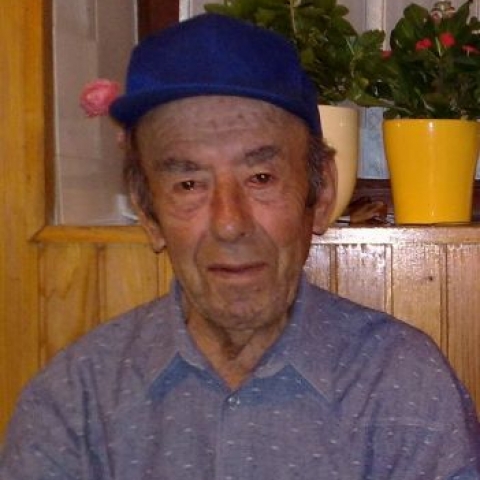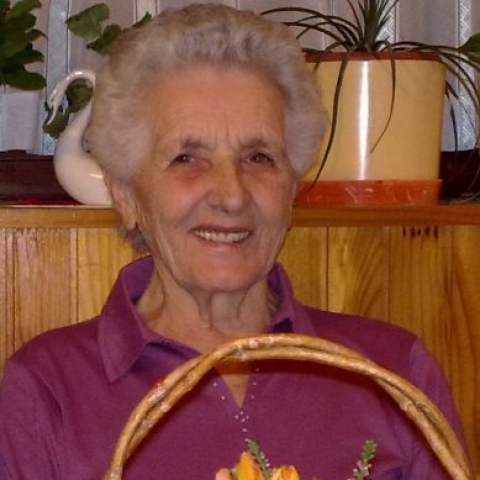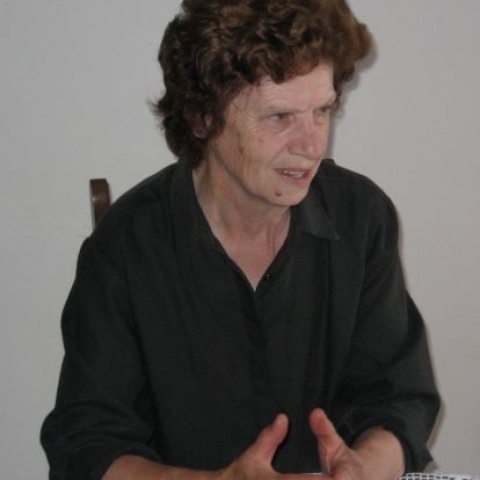Memories from Žejân/Žejane
As we collect oral histories in Vlaški and Žejanski, we document not only the language but also local history, culture and everyday life, as remembered by those who lived it. Here you can listen to snippets of interviews with fluent speakers recorded in Žejân/Žejane. Enjoy your listening!

Ši žejånski, tot je čå legåto ku totile životu
And Žejanski, it makes a whole with the rest of life.
Ana Legac (b. Stambulić) lu Matijo talks about her time growing up in the village of Žejân/Žejane (audio clip 1), remembers the day when her brother returned home from war imprisonment (audio clip 2) and tells about the trip from Pula to Žejân/Žejane (audio clip 3). (Recorded in 2007.)
Audio and text Photo album
Ponosu av fost ân Pust zvončår fi.
It was a matter of pride to be a bellringer during carnival time.
Ivan Sanković lu Jozo, from Žejân/Žejane, describes carnival traditions in the village from the moment the first sounds of bellringers’ bells are heard (audio clip 1) to the day of Pust (Mardi Gras) (audio clip 2). He also talks about how his love of the bellringing tradition turned into an interesting pastime (audio clip 3). (Recorded in 2007.)
Audio and text Photo album
Nigdir na svitu, num ra fi kå ši ân Žejân.
I would not have it as good as in Žejân/Žejane anywhere else in the world.
Vilim Sanković le Gržinke, from Žejân/Žejane, talks about searching for bird nests with his friends as a child (audio clip 1), remembers his beloved grandfather and the interesting stories he liked to tell his grandchildren (audio clip 2), including a story of how he helped a neighbor cure a headache (audio clip 3). (Recorded in 2008.)
Audio and text Photo album
Pre čija av ženskele kântåt, šti, de tota gura.
Women sang there, you know, from the top of their lungs.
Kate Sanković (b. Sanković) le Gržinke, from Žejân/Žejane, talks about food often served for lunch when she was a child (audio clip 1), where in the village women from Žejân/Žejane gathered to sing together (audio clip 2) and tells a the story from her son Vilim’s childhood (audio clip 3). (Recorded in 2009.)
Audio and text Photo album
Nono av fost jåko bur ši vâk av folit neka meg jo la blaga mirå ku je.
Granpa was a good man and liked to take me along with him to graze the cattle.
Miho Doričić lu Opčarić, from Žejân/Žejane, retells the legend about the settlement of the village, he heard as a child (audio clip 1), talks about how the events in 1944 changed his life (audio clip 2) and remembers the day he got married to Ana (audio clip 3). (Recorded in 2009.)
Audio and text Photo album
Fost am de čelji pråvi!
We were mischievous!
Ana Doričić (b. Doričić) lu Opčarić, from Žejân/Žejane, retells her family’s legend about great-uncle Jandre and how his “destiny was decided” when he was still in the crib (audio clip 1), and how he later became a well-respected craftsman in the village (audio clip 2). She also talks about how she “swam” in the field (audio clip 3). (Recorded in 2009.)
Audio and text Photo album
Ku ruha t-aj obovit pak aj mes spara-l.
You put a sheet over you and ran after him in order to scare him.
Husband and wife Marija Sanković (b. Sanković) and Drago Sanković lu Kljomina, from Žejân/Žejane, talk about the return of Drago’s father from Argentina, after years of working there (audio clip 1). Marija remembers the first day of school (audio clip 2) and Drago talks about how the woods in the area of Nova Draga were divided up in the 1940s (audio clip 3). (Recorded in 2009.)
Audio and text Photo album
Låk av fost fakut fin ši kolę s-av dica kupęjt.
The pond was well done and all the children swam there.
Pepo Stambulić lu Toncula, from Žejân/Žejane, remembers the games he played with his friends as a child (audio clip 1), talks about how he used to go to Vele Mune with a group of children to attend religion classes (audio clip 2), and tells about grazing sheep on hot summer afternoons (audio clip 3). (Recorded in 2009.)
Audio and text Photo album
Pre Šterna av fost jåko jåko čuda plesure.
People often danced at the Šterna.
Branka Doričić (b. Stambulić) lu Pavka, form Žejân/Žejane, talks about what happened when as a ten-year-old girl she took care of her baby sister (audio clip 1), remembers how, as a young woman, she went to a dance at the Šterna and met her husband there (audio clip 2), and how he later became a master woodworker (audio clip 3). (Recorded in 2009.)
Audio and text Photo album
Ši kând ręš ziče juva m-je kåsa, ręš vâk ziče ke m-je kåsa ân Žejân.
Whenever I’d say where my home is, I’d say it was in Žejân Žejane.
Sonja Doričić-Bačić lu Panjok, from Žejân/Žejane, from a family which kept the tradition of the old “kântu”, remembers how people sang once in the village (audio clip 1) and talks about farm jobs undertaken on warm summer days (audio clip 2) and the sounds of her mother tongue (audio clip 3). (Recorded in 2009.)
Audio and text Photo album

Juva-s doj (Žejånci) momentalno nastanę žejånska limba.
Where there are two (Žejane) immediately the story žejanski.
Marija Kuharić (b. Doričić) lu Špavica, from Žejân/Žejane, remembers the first days at school in the village (audio clip 1), explains who “Mali medo” was (audio clip 2), and talks about customs and beliefs associated with June 24th, St. John day (audio clip 3). (Recorded in 2009)
Audio and text Photo album
